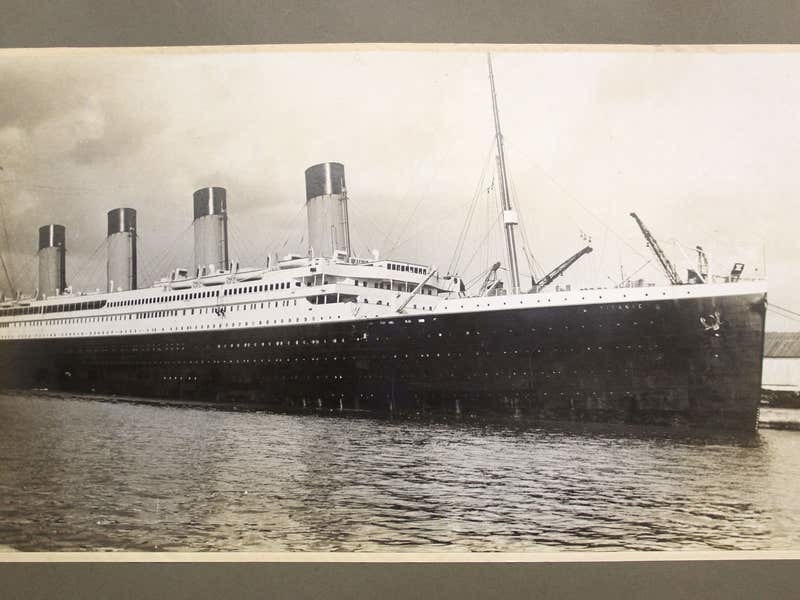She reached her destination, just as hundreds of other Islanders have left these shores to settle either in Australia or New Zealand.
Before then Canada was the natural choice and there is still a Channel Islands Association in Québec which is particularly strong on the Gaspé peninsular.
However, until ten years ago there was also a Channel Islands Association Down Under, combining both Australia and New Zealand. Indeed, in Auckland there is a large expanse of water called St Helier’s Bay.
All of this dates back to the days when the first son of a large Jersey family would inherit the farm while the other sons would have to find what work came their way, be it as a fisherman or a boatbuilder, because, before the advent of steel ships and steam engines, Jersey’s boatyards made the Island the sixth largest boatbuilding community in the world.
The ship that the new Jersey settlers travelled on to Sydney in 1854 was built of oak and made on the Island shoreline, probably in St Aubin’s Bay.
Jersey shipbuilders were craftsmen in their time. However, a combination of failed banks, which led to a run on the Jersey pound, and metal ships, made hugely popular in Britain by the 19th century’s most brilliant engineer, Isambard Kingdom Brunel, meant a decline in the Island’s fortunes and in the mid-19th century thousands of Islanders left these shores to find a new life on the other side of the world. They had to. The alternative was slow starvation and an early grave.
For many Jerseymen this grim story of an impoverished Island is well known, and although you could argue that this brief history has very little to do with today’s Sports pages, master sailor Peter Goss would beg to differ.
I mention Pete Goss MBE because recently he was guest of honour at the JATCo dinner at the Jersey Potteries.
He is also a world traveller who is prepared to forego the comforts of a luxury liner to build a stout little wooden boat and to sail her from Cornwall to Australia some time in autumn with a crew of seven.
A fortnight ago I wrote about this man who mortgaged his house to sail in the Vendée Globe, a round-the-world race for single yachtsmen which found him pitted against sailors with ten times his wealth.
He was doing rather well before a distress call in the Southern Ocean, miles from nowhere, led him to abandon any chance of winning to fight his way through a storm to save the life of fellow competitor Frenchman Raphael Dinelli, whose yacht had sunk.
Goss’s sea rescue made the national press and led to that MBE and to the French Legion d’Honneur.
Goss, not surprisingly, didn’t win that particular race. However, since then he has been Dinelli’s best-man at his wedding and the two men remain firm friends.
I suppose that once you save a man’s life for such a huge sacrifice – remember, he had sold his house to take part in the Vendée – a special bond exists.
Anyway, when Goss was in the Island I spoke to him.
He was, and is, still fiercely competitive. Despite being a relatively young man, in his 30s, he had staked his career, his house and his marriage for an adventure most of us can only imagine.
‘So what’s the next challenge?’ I asked him.
‘To recreate the journey of seven Cornishmen who built an open Mounts Bay lugger in Newlyn and set sail in her on Saturday 18 November 1854. They finally arrived in Melbourne on 14 March 1855.
‘The only break in the voyage was a week in Cape Town for repairs before the crew, all related, set sail again for the Southern Ocean.’
They made the journey, despite facing fierce seas which saw, according to the log book, ‘our gallant little boat (the Mystery) ride the mountains of sea remarkably well. (She) never shipped in any water . . . dry decks fore and aft.’
One hundred and fifty-three years on, Pete Goss has recreated a facsimile of that ship called the Spirit of Mystery.
‘So where did the wood come from? I asked.
‘Well,’ he said, ‘we’d walk through the Cornish woods, looking for fallen oaks, and we also found the frame of a 1930s Cornish lugger. But one of our best finds was an oak tree under some brambles, which had been lying there for years but whose middle was as tough as steel.’
The Spirit of Mystery – being such a small vessel with so few modern amenities – was built in seven months.
She was launched in Cornish waters a month ago, and should set sail in October to give Goss and his six- man crew a chance to enjoy Christmas in Capetown on their way to Melbourne.
The 2008 voyage won’t be a glamorous journey. They’ll sail by the stars with no engine, toilet or electrical or navigational systems on board. But he tells me he is more excited by this than by any other adventure that he has ever taken part in. ‘Life is for living and this, for me, is life at its best,’ he said.
So I told him about our own maritime history.
‘Before we set sail I promise you I’ll bring Spirit to the Island,’ he said, full of enthusiasm, ‘although I can’t say when, as so much will depend on the wind and the seas.’
And I also told him of other Islanders’ pipe-dreams; to build a Jersey boat to sail west to the Gaspé peninsular where Jersey’s fishermen used to go 200 years ago, to places like Paspébiac, where the Robin family built their own wooden ships as well as fishing for cod.
‘Wouldn’t it be great,’ I said, ‘if we could build a Jersey ship to recreate part of Jersey’s heritage and for the Island to have a full-sized wooden vessel, one which wouldn’t have looked out of place in the mid-19th century.’
‘You can do it,’ Pete Goss insisted. ‘All you need is enough vision and the desire to recreate history.’
Goss supported – supports – such a scheme. So I commend the idea to those Islanders who are passionate about Jersey’s seafaring history. And I would hope that this article prompts enough interest to sow the seeds of a Jersey, rather than a Cornish, 19th century ship to sail halfway around the world.
•As well as the Jersey Association of Trust Companies (JATCo), Pete Goss’s visit to the Island was sponsored by Collins Stewart Wealth Management.






